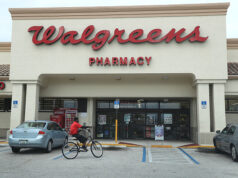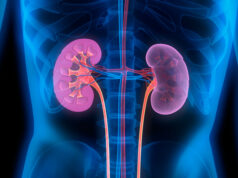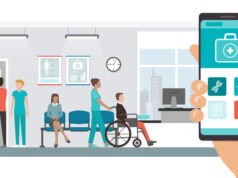
Hospitals often admit patients without knowing the status of the patients’ communicable disease(s). This status is only known after a medical evaluation and testing. In this situation, many patients and staff may have been exposed to the now known communicable disease during their encounters with the patient in areas such as waiting rooms, exam rooms, or labs.
Back in 2014, as an immediate response to the Ebola outbreak, our health system Wake Forest Baptist Health implemented and operationalized a real-time location system for contact tracing. Our hospital already had an RTLS infrastructure in place that we were using for asset management, patient flow, environmental monitoring, and other use cases, so it took us just one week from the concept of using our RTLS system for this purpose to a fully working system. This rapidly established contact tracing capability enabled us to quickly isolate and monitor interactions between an infected patient and other patients and staff.
The RTLS infrastructure now covers over 4,250,000 square feet of our main campus, including over 8,000 staff members wearing location badges, and nearly all of our patients receive RTLS “CarePass” badges when they come to Wake Forest Baptist’s medical facilities.
The automatically generated contact tracing report, which leverages data collected by RTLS, allows us to trace infectious disease carriers and quickly see other patients and staff who may have come into proximity with the infected person.
This information enables us to quickly take the necessary steps to first generate an accurate assessment of the exposure risk and then to efficiently minimize the spread of disease. These steps may include quarantining staff and patients, providing prophylactic treatments if indicated, sterilizing potentially contaminated equipment, and/or removing patients and staff from quarantine who may have otherwise been included as a precaution.
In past situations, generating these assessment reports of exposure risk involved several people and many hours of work to assemble, and in the end still only resulted in conservative estimations of the risk, whereas now accurate reports can be generated in seconds through the use of the locating technology and the associated practices.
Our health system also leverages our RTLS system for asset locating, which adds another layer of protection and efficiency. During an outbreak, the system supports our staff by quickly locating essential medical equipment like ventilators, powered air purifier respirators, and infusion pumps. In addition, appropriate staff can be notified automatically when soiled equipment needs to be retrieved.
This process further minimizes the risk of incidental exposures, ensures proper disinfection procedures and enables equipment to safely and efficiently be circulated back into the pool of clean inventory.
The RTLS solution improves visibility into our patient location and status that goes well beyond crisis situations. The system is used daily to optimize patient care and enhance their experience by decreasing waiting times and automating communication to patients and their families.
Since our staff also wears CarePass badges, we can use the RTLS system to automatically request immediate assistance or help in duress situations by simply pressing a button on their badge. Doing so alerts security to respond with the requested assistance to the exact location of the staff member.
To date, the RTLS system, managed by Infinite Leap, has provided us with $40 million of quantifiable value, and has become a mission-critical tool that is essential to an effective response during a pandemic caused by the rapid spread of communicable diseases, including COVID-19.
Conrad Emmerich, is senior vice president of business services at Wake Forest Baptist Health








